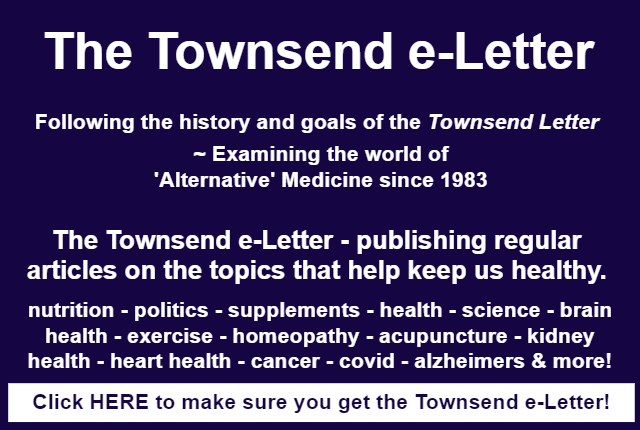A book review
Jonathan Collin, MD
Food-Associated Autoimmunities: When Food Breaks Your Immune System
by Aristo Vojdani, PhD, MSc and Elroy Vojdani, MD
First Edition: Autoimmunity, Volume 1
A & G Press, A & G Wilshire, LLC., 822 S. Robertson Blvd, Suite 312, Los Angeles, CA 90035.
2019; Hardback; 432 pg.; $120.00
Recently a patient advised me of a diet that was being advocated not only for weight loss but also for health recovery. The individual promulgating the diet heartily proclaimed its simplicity and assured weight loss; he had lost 70 lbs. in the year he had been abiding by it. His daughter who had been suffering from a myriad of ailments not only lost weight but also became entirely asymptomatic. No testing was required before restricting food intake, and there were no adverse effects over which one should be concerned.
The diet: meat, salt, and water. Definitely not a diet for vegans or vegetarians. Certainly not a high fiber diet. A diet high in phytochemicals and antioxidants it is not. But it appears to have all the essential amino acids, fatty acids, vitamins, minerals, and other nutrients sufficient for survival. Of course, this diet has not been tested and is not being advised by the book authors or this reviewer.
What is notable about the diet is what is missing, namely no grain, no dairy, no lectins, no nuts, no soy, no fish, no shellfish, no fowl, and no eggs. Yes, it is a very boring diet—no dressings, no condiments, no processed foods, no preservatives, no colorants, and no chemical additives. What the Vojdani authors, who are father and son, would tell you is that the diet removes offending foods from the gastrointestinal tract.
With an elimination of sensitizing foods, the intestine’s immune system would not continuously form antibodies to them. Such IgG, IgM, and IgA antibodies, unfortunately, not only have a high affinity for the respective food proteins but also diverse tissue receptors. In other words, the IgG antibody for gluten can have a strong cross-reactivity with myelin or neuron dendritic cells. It is the accumulation of antibodies formed by the intestine’s mucosal immune system that sets the path for unimpeded cross-reactivity that leads to autoimmunity.
Immune system antibodies rarely exist alone as individual immunoglobulins; much more frequently an antibody to food will complex with a tissue-based antibody and a complement component will cement the complex together. As one might imagine the body’s ability to control such food-tissue complexes is limited, and the potential is high for major tissue damage to follow.
As the Vojdanis explain in this very well written and illustrated text, food ingestion plays a markedly important role in initiating and perpetuating autoimmune disease, a role that is nearly always ignored except in celiac disease. In fact, it is non-celiac gluten sensitivity, a condition that is rarely diagnosed by allergists or gastroenterologists, that is thought to be responsible for irritable bowel syndrome.
For most patients the “meat only” diet and other restrictive diets that eliminate grains and other foods would not be an acceptable option unless there was evidence provided why such a restriction would be required. Although an “elimination” diet would offer valuable information for the physician and patient, most individuals do not have the commitment and perseverance to wholly test the foods they are eating. An appropriate alternative would be to assess antibody levels to foods and food components.
The Vojdanis discuss the need to measure blood antibody levels directly and avoid crude laboratory testing based on qualitative in-vitro assessment of cellular deformation following exposure to food antigens. From the authors’ experience food testing needs to include antibody response to both cooked and raw foods—the reaction to a raw food is not necessarily the same as a cooked food.
Individual protein components of grain and dairy need to be measured for similar reasons—one protein component may have a strong antibody response while a related component may not. The big one, nevertheless, is wheat, more specifically gluten. Missing a gluten sensitivity and finding reactivity to a fruit or vegetable would be a major oversight; once gluten sensitivity is confirmed or ruled out, determining other food reactivities would be helpful diagnostically.
A list of foods that have demonstrate elevated IgG antibody levels is a basis to ask a patient to undertake an elimination diet of the offending foods. But to what degree are these food reactivities damaging the body? Aristo Vojdani’s work has demonstrated that cross-reactivity of food-based antibodies leads to tissue damage, yielding tissue-damage based antibodies.
Laboratory assessment of antibody reactivity can be measured of the mucosal epithelium, providing an assessment of intestinal permeability. Similarly, antibody reactivity of neuronal epithelium and its associated immune system provides a means to assess the blood brain barrier function and central nervous system immunity. Indeed, much of the body tissues can be evaluated to determine if there is pathologic tissue reactivity, providing a novel means to determine if there is autoimmunity developing in connective tissue, muscle, bone, skin, thyroid, liver, and other organ tissues.
If there is a relationship between food reactivity and tissue reactivity, theoretically one could modify one’s diet and observe symptomatic changes while monitoring changes in antibody levels.
Dr. Aristo Vojdani is the head of Immunosciences Laboratory where he has developed the methodology for assessment of food reactivity and tissue reactivity. Lab testing utilizing Dr. Vojdani’s technology is available through Cyrex Laboratory in Phoenix, Arizona. Laboratory testing is organized in arrays that address pathological concerns such as “Wheat/Gluten Proteome Reactivity & Autoimmunity” and “Multiple Autoimmune Reactivity Screen.” While some patients who have immune system deficiency will not show any food reactivity, most patients with autoimmunity will have significant food reactivity. Hence, complex, symptomatic patients deserve to undergo food reactivity testing.
Returning to the “meat only” diet discussed earlier, meat has been documented in the past few years to be a cause of food reactivity. People who have been bitten by the Lone Star tick have developed an IgG allergic reaction to beef and pork. Such individuals manifest severe allergic reactions whenever they eat meat. Moreover, the Vojdanis discuss the mechanism by which digestion of red meat can lead to formation of xeno-antigens that bind to tissue and form xeno-autoantibodies, which threaten development of autoimmunity and cancer.
Furthermore, meat glue is used by the food industry to glue meat together. Unfortunately, as the Vojdanis discuss in their well-referenced, encyclopedic text, meat glue and meat proteins contribute significantly to autoimmunities. Hence, the “meat-only” diet could cause autoimmunity.
Finally, salt, itself, can help drive autoimmunity, according to the Vojdanis, because high salt can alter the microbiota, inducing an increased production of TH17 cells, the helper-T cells that can initiate autoimmunity.
This article was originally published in Townsend Letter, December 2019.



